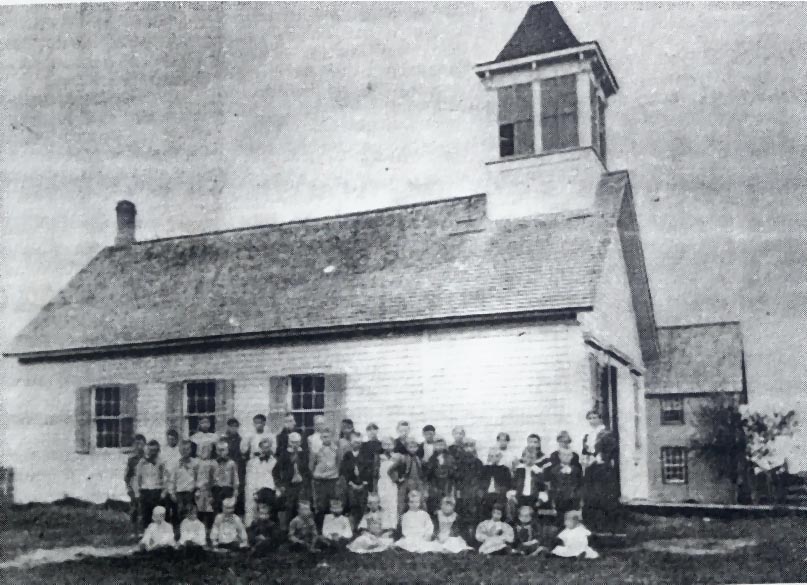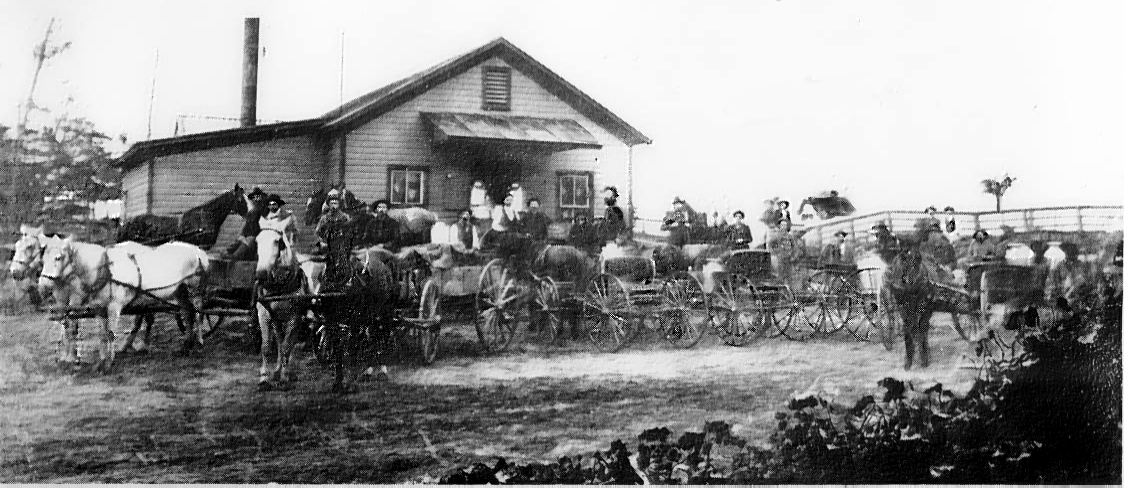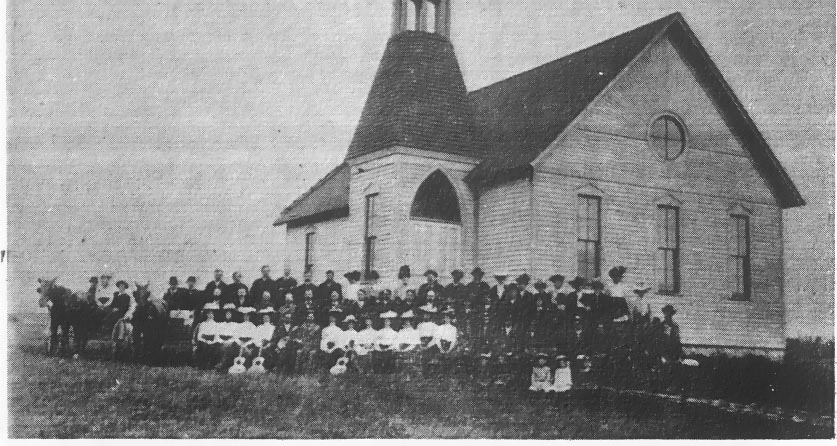| Oconto County Reporter
November 11, 1971 Contributed by Dave Cisler from the scrapbook of Miriam C. Barribeau CISLER Frostville Named for It’s Founder By Bruce Paulson - posted with his kind permission Transcribed by Editor Cathe Ziereis
"Names and places long gone still remain in the memories of men," and with this line a story of Frostville begins. Tourists bound for Kelly Lake pass through Frostville after leaving highway 32 east of Suring. They may be unaware of it, however, as signs marking the once prosperous community have long since disappeared from the Wisconsin rural scene. The settlement was named for A. C. Frost who arrived in the area in 1875. Remembered as a promoter, it was Frost who opened the first general store which later became the Frostville post office. Mall in the 1870's came once a month from Oconto, and after the railroad came to Lena It arrived weekly. (Frost was also instrumental in the early development of the Mountain area as well.) Other early settlers in Frostville included Severine Johnson, Magnus and August Arveson, Henry Johnson (not to be confused with the Henry Johnson from the town of How,) and A. Gregerson. South of Frostville proper was Magnus Arveson's stopping place; a hostelry situated long the Old North Branch toad which was a well-traveled stagecoach route from Oconto to Mountain. The Arveson’s settled in Maple Valley in 1871, the year of the Peshtigo fire. It is told that the smoke was so dense in the air that lamps were burned continuously day and night. Lumberjacks on their way to the camps were the most frequent stoppers. A story is told hat one spring two camps broke up simultaneously and in an effort to get a place at the dining table, some hungry jacks climbed through the windows. Mrs. Arveson would bake her bread at night and, in order to keep from falling asleep while the bread was rising, would rest her head on a large block of wood. If she did fall into a deep sleep and subsequently fall, she was awakened by bumping her head on the floor. The Arveson place was so built that freight wagons could pull into a long shed where the cargo could be unloaded out of inclement weather. Near the Magnus Arveson place stood August Arveson's general store. Trees in a field now belonging to Chester Arveson mark the former site of the store. August also had a general store in the present Lawrence Rupiper residence. The Maple Valley House in Frostville proper was the scene of much social activity from 1876 until the late 1890's. Built by A. Gregerson, It was later sold to Mike Peterson, a most gracious landlord. The Maple Valley House was the site of the one and only saloon in the township of Maple Valley and today Maple Valley is the only dry township in the county. A popular attraction at the Maple Valley House was a pet bear which belonged to Mr. Peterson. He and the bear would stage mock wrestling matches for the spectators. The bear, however, soon tired of the constant teasing he received from adults and children as well and, after being so angered, broke Mr. Peterson’ s arm with one swift swipe of his mighty paw. The bear was soon left loose to forage on his own. Henry Johnson owned a wagon making and blacksmith shop
located near the present Knaack farm. Though Johnson owned the wagon shop,
he himself was not a wagon maker. Joseph Eichhorn was hired to build and
repair the wagons.
After a few years in Frostville, Johnson joined the rush to Dakota land, journeying west with his small family in a covered wagon. After three years on the prairie, however, he moved back to Frostville in 1889. While many families were still living in sod houses, Johnson made boast of owning the only wooden frame house on the prairie. The land for the Frostville School and cemetery were donated by Johnson. The first to be buried in the cemetery was Johnson's daughter who died at an early age. The blacksmith shop was later owned by Josh Cheffings and later yet by Peter Buchburger. A wooden frame stood in front of the shop in which oxen were hoisted up and shod. The first Frostville School, originally a small log cabin, was built in 1878. Later wooden siding was put on the building. It was replaced by the present brick school that still stands today. Miss Annie Volk of Oconto Falls was the first teacher, followed by Nellie Bellew. One outstanding figure to play an important part in the county's educational program was Ellen B. McDonald, who attended the Frostville School and later held the position of county school superintendent for many years. After timber had been cleared and farms started to thrive in the wilderness, a cooperative was organized and a creamery was erected on the site of the present Abel Steffeck home. Pat Murphy was the first person hired to operate the creamery. Later on, a cheese factory was started in one wing of the Maple Valley House.
Frostville’s church was organized May 12, 1894, and
at the time of its origin was known as the
When word came that a railroad was coming through this part of the county, Frostville residents had hopes that the track would pass through their village. Much to their disappointment, the swampland that is now Suring was chosen and, with Suring's building boom, Frostville almost ‘bit the dust’. The hotel burned; the store, wagon and blacksmith shops were torn down, and the consolidation of schools put an end to the Frostville School in the mid-1960's. Though no signs "Welcome to Frostville" are in existence,
the name still remains in the memories of area residents.
|


